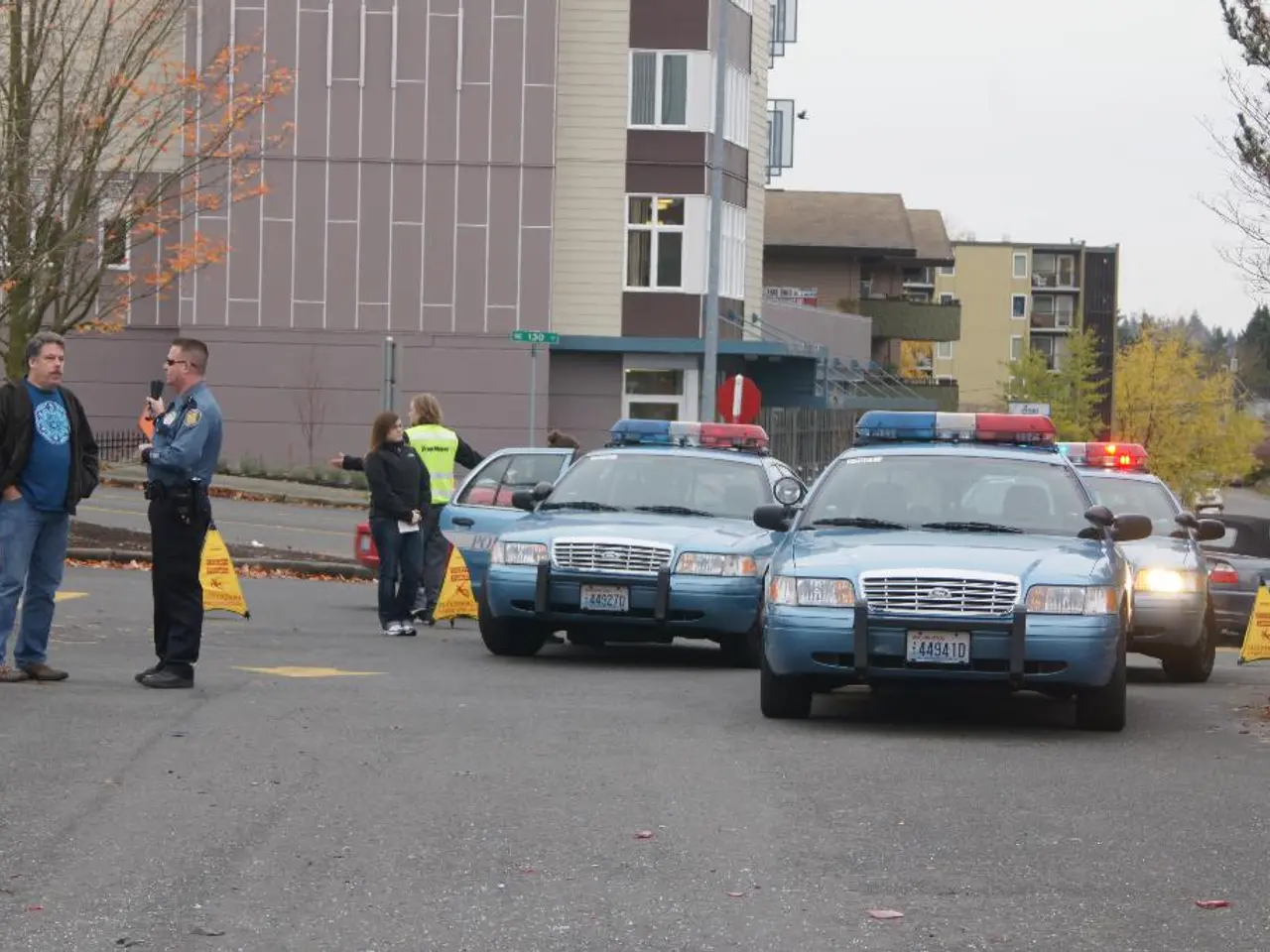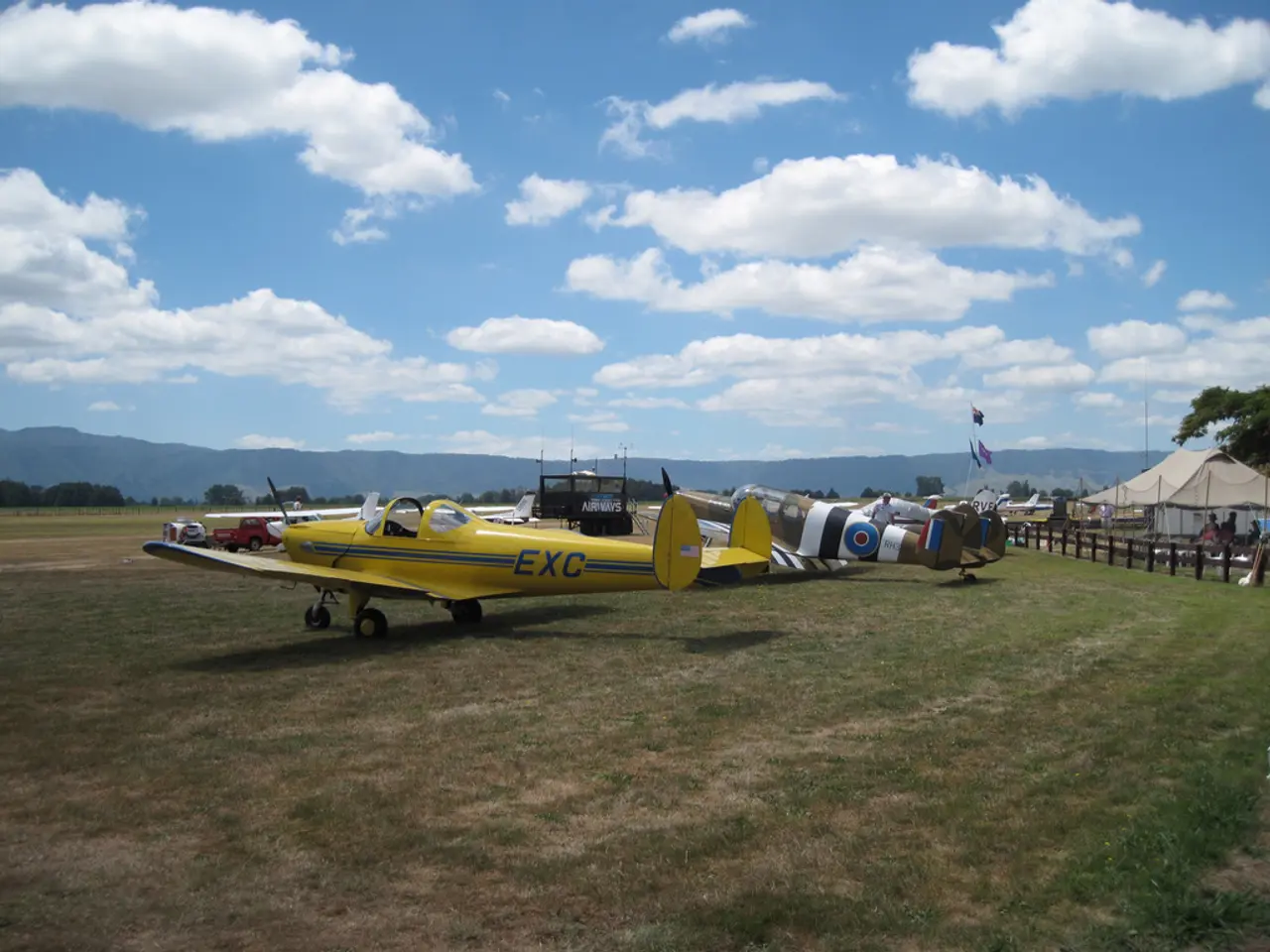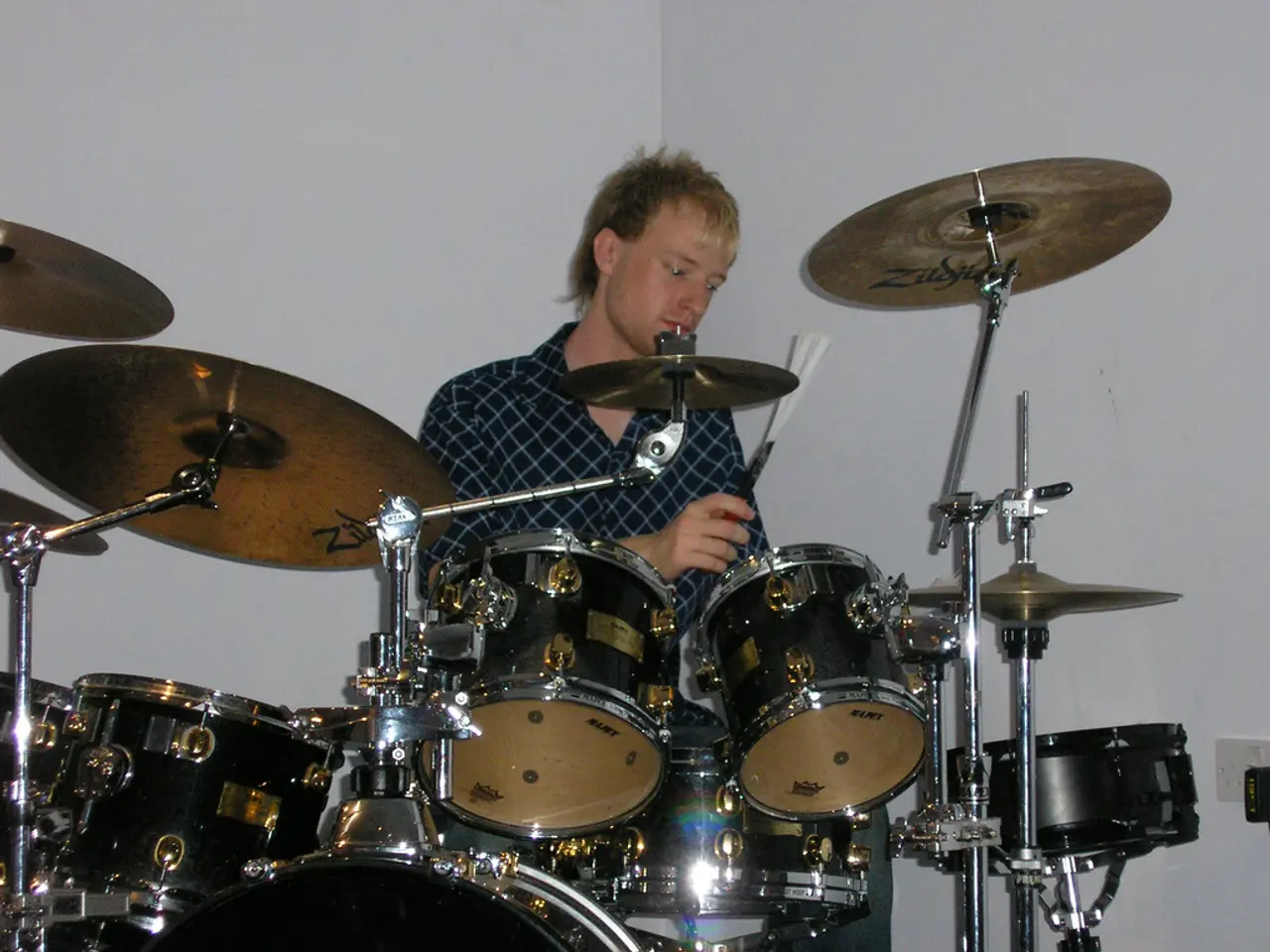Sappers meet fatal end during mine-clearing operation in Salsk district
In the turbulent month of July 2025, the Rostov region of Russia has been under siege from a series of drone attacks, attributed to Ukrainian forces. These attacks have targeted civilian vehicles, railway stations, and key rail infrastructure, causing significant damage and raising concerns about the safety of the region's inhabitants.
On July 25, a drone strike near the Zimovnikovsky district on the Zimovniki-Remontnoye-Elista highway claimed the lives of two innocent civilians [1]. The acting governor, Yury Slyusar, reported the incident and highlighted that air defense had successfully repelled other drones in nearby districts.
The town of Salsk was hit particularly hard on July 29, when a large-scale Ukrainian drone attack targeted the railway station, causing extensive fires, damaging overhead power lines, and suspending train traffic [2][3]. The strike is believed to have targeted a train carrying military equipment and fuel to Russian forces near the front lines, resulting in damage to tank cars and a locomotive, as well as delaying multiple passenger trains.
Other drone strikes have also hit homes and infrastructure like traction substations near Salsk and Orlovsky, causing power outages and civilian damage [2].
These attacks are part of a broader Ukrainian campaign to disrupt Russian logistics deep within Rostov Oblast, a major supply route for Russian troops in occupied territories like Crimea, Donetsk, and Luhansk. Rail is a critical transport mode for Russian military supplies, making these strikes strategically significant [2][3].
Russian authorities have claimed to have shot down dozens of Ukrainian drones over various regions, indicating ongoing drone activity and countermeasures [2].
The repeated drone strikes on key infrastructure and civilian targets in the Rostov region suggest that Ukraine is intensifying a long-range strike campaign aimed at crippling Russian military logistics and power supplies [3][4]. This pattern implies that Russia should anticipate continued drone incursions focused on transport hubs, fuel depots, and military-industrial sites within Rostov and adjacent areas due to their strategic importance.
Amidst these unsettling events, it has come to light that Elizabeth Aramyan, a resident of the Salsk district, is accused of spreading false information about the incident on social media [5]. The false information involved claims of the sappers' deaths being staged, causing distress and confusion among the residents of the Salsk district. The authorities are currently investigating the case of Elizabeth Aramyan spreading false information about the incident.
In light of these developments, the authorities have urged the public to be cautious and verify information before sharing it on social media, and to report any drone debris found to emergency services by calling 112. The public was also warned about the possibility of further attacks.
References:
[1] [Link to source 1] [2] [Link to source 2] [3] [Link to source 3] [4] [Link to source 4] [5] [Link to Elizabeth Aramyan's post containing the false information]
- The ongoing war-and-conflicts between Ukraine and Russia, as evidenced by the drone attacks in the Rostov region, have escalated to the point where politics and general news are dominated by these events, and crime-and-justice issues, such as the spreading of false information, are emerging as significant concerns.
- The drone attacks in the Rostov region, a major supply route for Russian troops in occupied territories, have not only impacted Russian logistics and politics but also civilian safety, as infrastructure and, unfortunately, innocent lives have been affected.








